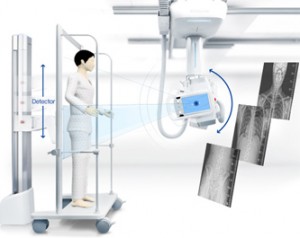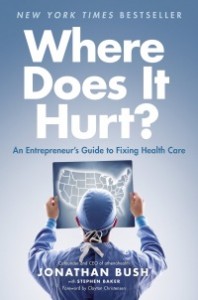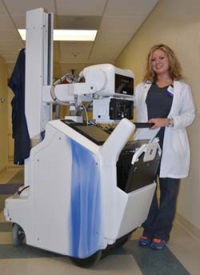July, 2014
- How US healthcare companies can thrive amid disruption
McKinsey adds their insights into how to transform our business from a fee-for-service (volume - do more get paid more) to the new reality of outcome based reimbursement. Medical Device Manufacturers used to selling boxes and building ROI's based on volume won't survive under the new payment structure. "Although healthcare has been changing for decades—think about the introduction of diagnosis-related groups (DRGs) or the initial push toward managed care in the 1980s—the Affordable Care Act (ACA) promises to accelerate both the rate of change and the level of uncertainty confronting the industry."
- Urgent Care for Kids Expands to Largest Pediatric Urgent Care Provider in Texas
- Technique charts comparing DR and CR – a resource every Radiology department needs
- GE Healthcare shuffles Milwaukee-area execs after Medtronic hirings
- 70 Accountable Care Agreements Announced So Far This Year
- Urgent Care has mushroomed into an estimated $14.5 billion business
Salespeople - if you're not targeting Urgent Care you're missing one of highest growth big dollar segments of the market. Since 2008 investors have sunk $2.3 billion into urgent care clinics. The race is on to build large chains with powerful, national brands. Wall Street money is driving the growth, but so are other forces. Millions of newly insured Americans are seeking care. Others are frustrated by long waits at E.R.s, or by having to conform to regular doctor’s hours.
- Dunlee Glassware Tip of the Month
- Global ultrasound market expected to flourish
The global ultrasound device market is expected to reach $8.7 billion by 2019, growing at a compound annual growth rate (CAGR) of 6.4 percent, according to a new Transparency Market Research report.
- US Senate Report: Improving Audits – How We Can Strengthen the Medicare
- Digital Radiology (DR) catching up – becomes more than retrofitting analog rooms
- How US healthcare companies can thrive amid disruption
Although healthcare has been changing for decades—think about the introduction of diagnosis-related groups (DRGs) or the initial push toward managed care in the 1980s—the Affordable Care Act (ACA) promises to accelerate both the rate of change and the level of uncertainty confronting the industry.
- Where Does It Hurt?: An Entrepreneur’s Guide to Fixing Health Care
The same American medical establishment that saves lives and performs wondrous miracles is also a $2.7 trillion industry in deep dysfunction. And now, with the Affordable Care Act (Obamacare), it is called on to extend full benefits to tens of millions of newly insured. In this provocative book, Jonathan Bush, co-founder and CEO of Athena Health, calls for a revolution in health care to give customers more choices, freedom, power, and information, and at far lower prices.
- Who knew – IDC is still in business. CCD DR is alive, any buggy whip manufacturers out there?
- SIMULTANEOUSLY LOWERED COMPUTED TOMOGRAPHY RADIATION DOSE AND IMPROVED IMAGE QUALITY
- Digital X-Ray Market Worth $8,710 Million by 2018
In terms of value, the global digital X-ray market size was estimated at $4,687.2 million in 2013 and is expected to grow at a CAGR of 13.2% in the next five years.
The report, “Digital X-ray Market by Application (Mammography, Dental, Chest Imaging), Technology (Computes, Direct), Portability (Floor to ceiling mounted, Ceiling mounted, Handheld), End User, Price segments, Flat panel detectors, Software – Global Forecast to 2018,” provides a detailed overview of the major drivers, restraints, challenges, opportunities, current market trends, and strategies impacting the digital x-ray market along with the estimates and forecasts of the revenue and share analysis.
- What Does the Future Hold for Medtech? One word – less
Healthcare reform is creating a future that is incompatible with the business models of today. Few of today’s companies are prepared. Expect winners and notable losers among even the biggest names in the medtech industry. “An industry accustomed to growth and high margins is quickly being forced into a world of stagnation and price erosion.” Expect 20% to 25% revenue decline and a consolidation of the mega-manufactures into less than a dozen companies. Large hospital systems will control the majority of purchases and distribution will shift to low-cost delivery channels.
- Philips changes its management structure
Philips decided in January to temporarily suspend production of PET/CT and SPECT/CT scanners in order to devote all of its time and energy to resolving the issue, said Klink. Philips is also looking to develop a new type of customer relationship and they're hoping this new management structure will accelerate that. "We see a bigger demand for partnership agreements where we team up with a hospital and we work through performance based revenue models rather than just selling an individual scanner," said Klink.
- Is the Cleveland Clinic more interested in promoting itself or Healthcare? A knife in the back from CEO Cosgrove
Close the Hospital, Fire the Physician: The Case For Harshness in Healthcare
The $2.8 trillion industry that fatally harms upwards of 440,000 patients per year might need is a good dose of mercilessness — toward itself. Toby Cosgrove, MD, CEO of Cleveland Clinic and Jonathan Bush, CEO and co-founder of Athena Health said some shocking things at a recent panel discussion. We have too many hospitals. “The hospital occupancy in the United States right now is 65 percent. There were a million hospital beds 20 years ago. "Now there are 800,000 and we still have too many," he said.
Closing hospitals, firing doctors, hanging up on calls for donations: It sounds reprehensible, except it's not at all. It's the new reality. It used to feel crass to talk about healthcare with business lexicon, but it's getting easier and easier by the day. This isn't good news to hospitals that have been asleep at the wheel, masking their faults with do-gooder hyperbole about their missions. People may not have much patience for that fluff too much longer.
- CMS proposes waiting longer to pay Medicare ‘bounty hunters’
- 5 Common Questions Leaders Should Never Ask
“Never ask a question if you don’t want an answer.” Some good advice for leaders and salespeople from the Harvard Business Review. It used to be that providing answers was the key to success. Today asking the right questions is far more important.
- What does a 2% reimbursement cut mean to radiology?
- Digital Exposure & Radiation Safety Including Technique Development
- DR on Xray Portables simply makes business sense
There exists clear clinical evidence that the latest digital radiography (DR) detector portable X-ray units allow for portable exams to be performed in almost half the time previously required for computed radiography (CR) and film-based exams.
- In a value based reimbursement world what are Radiologist’s concerned about?
- MemorialCare Health System of Los Angeles, CA shakes things up for population health
Helen Macfie, PharmD, Chief Transformation Officer, and Regina Berman, MA, BSN, Vice President of Population Health, have been hired to improve outcomes, reduce hospital readmissions, and coordinate care throughout the community.
- Nigerian email promising riches? Medical Device Manufactures get hit for tens of millions.
Using fraudulent email addresses and purchase orders, individuals claiming to act on behalf of university research departments will arrange for shipment of medical equipment to a United States location. Upon delivery, the equipment is immediately reshipped to Africa, typically Nigeria.
- What is the Secret to Successful Sales Effectiveness Initiatives?
“The culture of our organization is what will hold us back. We know what changes we need to make and the right solutions for our problems. That’s the easy part. Getting the organization to adopt them is far more difficult.”
- Can you help? The top issues hospitals are considering to reduce costs
• Reducing hospital readmissions — 42.9 percent
• Maximizing efficiency with existing resources — 34.5 percent
• Implementing patient care coordination — 30.4 percent
• Changing medical malpractice laws — 30 percent
• Alternatives to physician delivery of primary care — 29.6 percent
• Improving ROI of products/technology — 23.2 percent
• Improving supply chain management — 21.3 percent
• Redesigning hospital care spaces for efficiency — 21.2 percent
- Hospitals have a target on their backs: CMS exorbitant payment to “bounty hunters
In their attempt to claw back money for Medicare and Medicad, CMS pays private auditors as part of the RAC program (recovery auditing program). Auditors get from 9% to 13% of the money they accuse hospitals of miss-billing for. Unfortunately they have a dismal record because a large percentage of claw back funds get returned to hospitals. So the question is with such a large financial incentive are the auditors making up these false charges against hospitals? AHA answers that in this whitepaper to CMS.
- Still a shocking statistic: US spends double on healthcare over all developed nations
1. U.S. — $8,745 in health expenditure per capita
2. Norway — $6,140
3. Switzerland — $6,080
4. Netherlands — $5,099
5. Austria — $4,896
6. Germany — $4,811
7. Denmark — $4,698
8. Canada — $4,602
9. Luxembourg — $4,578
10. Belgium —$4,419







